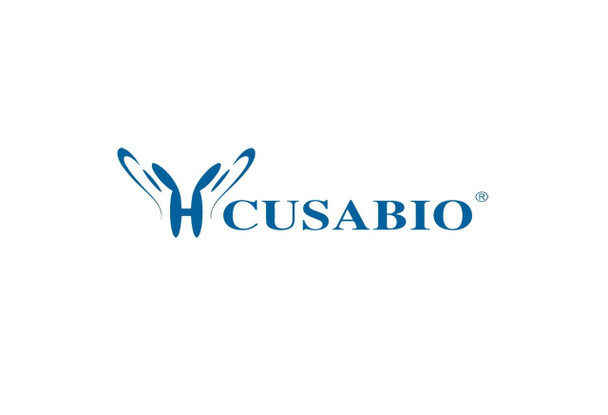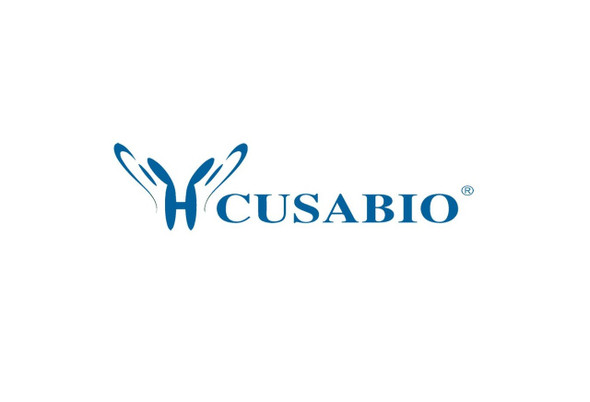Cusabio Virus & Bacteria Recombinants
Recombinant Sindbis virus Structural polyprotein, partial | CSB-CF361018SHZb2
- SKU:
- CSB-CF361018SHZb2
- Availability:
- 18 - 23 Working Days
Description
Recombinant Sindbis virus Structural polyprotein, partial | CSB-CF361018SHZb2 | Cusabio
Alternative Name(s): p130
Gene Names: N/A
Research Areas: Others
Organism: Sindbis virus (SINV)
AA Sequence: YEHATTVPNVPQIPYKALVERAGYAPLNLEITVMSSEVLPSTNQEYITCKFTTVVPSPKIKCCGSLECQPAAHADYTCKVFGGVYPFMWGGAQCFCDSENSQMSEAYVELSADCASDHAQAIKVHTAAMKVGLRIVYGNTTSFLDVYVNGVTPGTSKDLKVIAGPISASFTPFDHKVVIHRGLVYNYDFPEYGAMKPGAFGDIQATSLTSKDLIASTDIRLLKPSAKNVHVPYTQASSGFEMWKNNSGRPLQETAPFGCKIAVNPLRAVDCSYGNIPISIDIPNAAFIRTSDAPLVSTVKCEVSECTYSADFGGMATLQYVSDREGQCPVHSHSSTATLQESTVHVLEKGAVTVHFSTASPQANFIVSLCGKKTTCNAECKPPADHIVSTPHKNDQEFQAAISKTSWSWLFALFGGASSLLIIGLMIFACSMMLTSTRR
Source: in vitro E.coli expression system
Tag Info: N-terminal 10xHis-SUMO-tagged
Expression Region: 807-1245aa
Sequence Info: Partial
MW: 65.9 kDa
Purity: Greater than 85% as determined by SDS-PAGE.
Relevance: Capsid protein possesses a protease activity that results in its autocatalytic cleavage from the nascent structural protein. Following its self-cleavage, the capsid protein transiently associates with ribosomes, and within several minutes the protein binds to viral RNA and rapidly assembles into icosaedric core particles. The resulting nucleocapsid eventually associates with the cytoplasmic domain of E2 at the cell membrane, leading to budding and formation of mature virions. New virions attach to target cells, and after clathrin-mediated endocytosis their membrane fuses with the host endosomal membrane. This leads to the release of the nucleocapsid into the cytoplasm, followed by an uncoating event necessary for the genomic RNA to become accessible. The uncoating might be triggered by the interaction of capsid proteins with ribosomes. Binding of ribosomes would release the genomic RNA since the same region is genomic RNA-binding and ribosome-binding
Reference: "Nucleotide sequence of the 26S mRNA of Sindbis virus and deduced sequence of the encoded virus structural proteins." Rice C.M., Strauss J.H. Proc. Natl. Acad. Sci. U.S.A. 78:2062-2066(1981)
Storage: The shelf life is related to many factors, storage state, buffer ingredients, storage temperature and the stability of the protein itself. Generally, the shelf life of liquid form is 6 months at -20?/-80?. The shelf life of lyophilized form is 12 months at -20?/-80?.
Notes: Repeated freezing and thawing is not recommended. Store working aliquots at 4? for up to one week.
Function: Capsid protein
Involvement in disease:
Subcellular Location: Capsid protein: Virion, Host cytoplasm, Host cell membrane, SUBCELLULAR LOCATION: Precursor of protein E2: Virion membrane, Single-pass type I membrane protein, Host cell membrane, Single-pass type I membrane protein, SUBCELLULAR LOCATION: Spike glycoprotein E2: Virion membrane, Single-pass type I membrane protein, Host cell membrane, Single-pass type I membrane protein, SUBCELLULAR LOCATION: Protein 6K: Host cell membrane, Multi-pass membrane protein, Virion membrane, Multi-pass membrane protein, SUBCELLULAR LOCATION: Spike glycoprotein E1: Virion membrane, Single-pass type I membrane protein, Host cell membrane, Single-pass type I membrane protein
Protein Families: Alphavirus structural polyprotein family
Tissue Specificity:
Paythway:
Form: Liquid or Lyophilized powder
Buffer: If the delivery form is liquid, the default storage buffer is Tris/PBS-based buffer, 5%-50% glycerol. If the delivery form is lyophilized powder, the buffer before lyophilization is Tris/PBS-based buffer, 6% Trehalose, pH 8.0.
Reconstitution: We recommend that this vial be briefly centrifuged prior to opening to bring the contents to the bottom. Please reconstitute protein in deionized sterile water to a concentration of 0.1-1.0 mg/mL.We recommend to add 5-50% of glycerol (final concentration) and aliquot for long-term storage at -20?/-80?. Our default final concentration of glycerol is 50%. Customers could use it as reference.
Uniprot ID: P03316
HGNC Database Link: N/A
UniGene Database Link: N/A
KEGG Database Link: KEGG
STRING Database Link: N/A
OMIM Database Link: N/A









